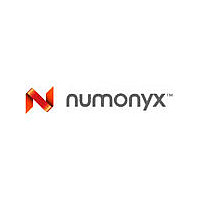RC28F640J3F75A NUMONYX, RC28F640J3F75A Datasheet - Page 38

RC28F640J3F75A
Manufacturer Part Number
RC28F640J3F75A
Description
Manufacturer
NUMONYX
Datasheet
1.RC28F640J3F75A.pdf
(66 pages)
Specifications of RC28F640J3F75A
Lead Free Status / RoHS Status
Not Compliant
Available stocks
Company
Part Number
Manufacturer
Quantity
Price
Company:
Part Number:
RC28F640J3F75A
Manufacturer:
TOSHIBA
Quantity:
1 870
Company:
Part Number:
RC28F640J3F75A
Manufacturer:
Micron Technology Inc
Quantity:
10 000
Note:
9.4
Table 23: Block-Erase Command Bus-Cycles
Note:
Datasheet
38
Block Erase
After all user-data is written into the write buffer, issue the confirm command. If a
command other than the confirm command is issued to the device, a command
sequence error occurs and the operation aborts.
After issuing the confirm command, write-buffer contents are programmed into the
flash memory array. The Status Register indicates a busy status (SR.7 = 0) during
array programming.Issuing the Read Array command to the device while it is actively
programming or erasing causes subsequent reads from the device to output invalid
data. Valid array data is output only after the program or erase operation has finished.
Upon completion of array programming, the Status Register indicates ready (SR.7 = 1).
A full Status Register check should be performed to check for any programming errors,
then cleared by using the Clear Status Register command.
Additional buffered programming operations can be initiated by issuing another setup
command, and repeating the buffered programming bus-cycle sequence. However, any
errors in the Status Register must first be cleared before another buffered
programming operation can be initiated.
Block Erase Operations
Erasing a block changes ‘zeros’ to ‘ones’. To change ones to zeros, a program operation
must be performed (See
on a block basis - an entire block is erased each time an erase command sequence is
issued. Once a block is fully erased, all addressable locations within that block read as
logical ones (FFFFh for x16 mode, FFh for x8 mode). Only one block-erase operation
can occur at a time, and is not permitted during a program suspend.
To perform a block-erase operation, issue the Block Erase command sequence at the
desired block address.
A block-erase operation requires the addressed block to be unlocked, and a valid
voltage applied to VPEN throughout the block-erase operation. Otherwise, the
operation will abort, setting the appropriate Status Register error bit(s).
The Erase Confirm command latches the address of the block to be erased. The
addressed block is preconditioned (programmed to all zeros), erased, and then verified.
The read mode of the device is automatically changed to Read Status Register mode,
and remains in effect until another read-mode command is issued.
During a block-erase operation, STS and the Status Register indicates a busy status
(SR.7 = 0). Upon completion, STS and the Status Register indicates a ready status
(SR7 = 1). The Status Register should be checked for any errors, then cleared. If any
errors did occur, subsequent erase commands to the device are ignored unless the
Status Register is cleared.
The only valid commands during a block erase operation are Read Array, Read Device
Information, CFI Query, and Erase Suspend. After the block-erase operation has
completed, any valid command can be issued.
Command
Table 23
Section 9.3, “Programming
Numonyx
shows the two-cycle Block Erase command sequence.
®
Block Address
Address Bus
Embedded Flash Memory (J3 65 nm) Single Bit per Cell (SBC)
Setup Write Cycle
Data Bus
0020h
Operations”). Erasing is performed
Address Bus
Block Address
Confirm Write Cycle
Data Bus
March 2010
208032-02
00D0h












